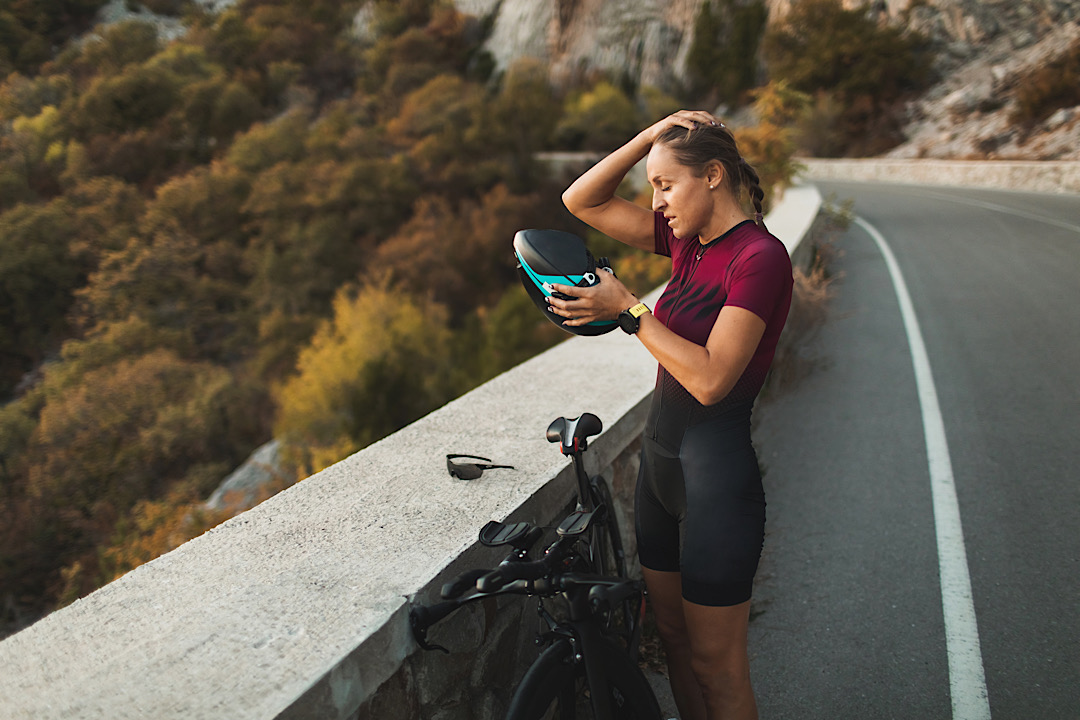At this point, the majority of American adults would prefer to be physically active outdoors, according to a survey conducted last year on OnePoll’s Verv Fitness app. Of the 2,000 participants, it was found that 75 percent of men and 51 percent of women prefer to exercise outdoors. Part of this is a side effect of the pandemic, but it’s probably not the only reason. Research also shows that exercising in nature offers bonus health benefits: Studies show that exercising outdoors increases your level of physical activity while making your workouts easier. It will also reduce your stress and cortisol levels, while boosting your mood and self-esteem.
But unlike indoor training, extreme temperatures of any kind, as well as other weather factors such as humidity, must be taken into account when it comes to outdoor training.
How Exercise in the Heat Affects Your Body
“During exercise at higher temperatures, our body does this great thing called thermoregulation, which is the body’s ability to maintain our internal temperature in a safe range,” said Heather Milton, CSCS, certified clinical physiologist. at NYU Langone Sports Performance Center. says Well + Good.
Every time you sweat, this is an indicator that your body is thermoregulating. Increased blood flow is another sign, Milton says. “The two combine to trigger higher heart rates to perform the same amount of work compared to a temperate environment,” he explains.
You have probably experienced it yourself, if you have ever tried hot yoga or Pilates and felt more difficult than when you practiced in an unheated room. Because of this, it is possible to train your body to better regulate itself, increasing the intensity of your workouts and preparing your body to perform at a higher heart rate, says Ally McKinney, personal trainer at Gold’s Gym. “The better we are at regulating the heat, the more efficient we can be in our training,” he says. “Like any other type of stress, adjusting and overcoming the intensity of these workouts is something you need to acclimatize to. “We can use the same technique when we work to train for higher temperatures.”
However, preparation can only take you that far, because there is a point where temperatures can be too high to allow your body to regulate itself.
How hot is too hot to exercise in the heat?
Each body responds differently to heat, depending on how accustomed it is to high temperatures. But we all need to be careful when the thermostat rises to 90 degrees, according to Milton. “Exercising at temperatures higher than 91.4 ° F can increase the risk of heat exhaustion, which occurs when the body is unable to maintain proper blood flow to all organs. and the skin for thermoregulation at the same time “, he says. Signs of heat exhaustion include fainting, fatigue, and inability to exercise, he says.
Signs of heat exhaustion include fainting, fatigue, and inability to exercise.
At about 92 degrees, your core temperature will be around 98.6 to 105 degrees, Milton says, and that is about the final range of heat exercise without the risk of heat stroke. “[Heatstroke] is even more severe and is associated with collapse and dysfunction of the central nervous system — confusion, dizziness, irrational behavior, etc. “This situation requires immediate cooling,” warns Milton.
The best way to avoid such symptoms is not to exercise in excessive heat. This could mean that you choose to exercise earlier or later in the day instead of when the temperatures are higher or stay in an air-conditioned room. But you also want to make sure that you prepare your body before, during and after your workout to ensure that it is able to regulate your internal temperature to its full potential.
How to prepare your body for exercise in the heat
In a word: hydration. “Before exercising, always drink two glasses of water and then during the activity try to drink four to six ounces of fluids every 20 minutes and always drink again after you finish,” says Jennifer Haythe, MD, chief cardiologist and director. of Cardiology at New York Presbyterian Hospital Columbia.
Because one of the main ways your body cools down is by sweating, you lose water through your skin. Another thing you lose is electrolytes — especially sodium, says Haythe. “Sodium is one of the most important minerals that our body needs to complete the fundamental processes of the cell.”
Drinking water or electrolyte sports drinks is one way to replenish your reserves. “Just be careful with your sports drinks, which are often full of too much sugar,” warns Haythe. “Always check the label and look for drinks that provide 14 grams of carbohydrates, 28 mg of potassium and 100 mg of sodium per 8 ounces.” Replenishing foods high in sodium, magnesium and potassium — such as cottage cheese, olives, bananas, and beets — also helps.
Generally, “for every pound of weight you lose through sweat, replace it with at least half a liter of water,” says Milton. “You may need to get up to 20 percent more fluids than usual.”
Oh Hello! You look like someone who loves free workouts, discounts on modern wellness brands and exclusive Well + Good content. Subscribe to Well +our online wellness community and unlock your rewards right away.

